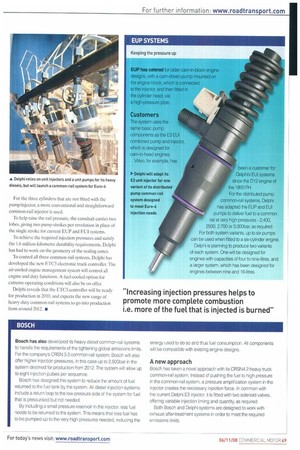BOSCH
Page 49

If you've noticed an error in this article please click here to report it so we can fix it.
Bosch has also developed its heavy diesel common-rail systems to handle the requirements of the tightening global emissions limits. For the company's CRSN 3.3 common-rail system, Bosch will also offer higher injection pressures, in this case up to 2,500bar in the system destined for production from 2012. The system will allow up to eight injection pulses per sequence.
Bosch has designed this system to reduce the amount of fuel returned to the fuel tank by the system. All diesel injection systems include a return loop to the low-pressure side of the system for fuel that is pressurised but not needed.
By including a small pressure reservoir in the injector, less fuel needs to be returned to the system. This means that less fuel has to be pumped up to the very high pressures needed, reducing the energy used to do so and thus fuel consumption. All components will be compatible with existing engine designs.
A new approach
Bosch has taken a novel approach with its CRSN4.2 heavy truck common-rail system. Instead of pushing the fuel to high pressure in the common-rail system, a pressure amplification system in the injector creates the necessary injection force. In common with the current Delphi E3 injector, it is fitted with two solenoid valves, offering variable injection timing and quantity, as required.
Both Bosch and Delphi systems are designed to work with exhaust after-treatment systems in order to meet the required emissions limits.




























































































































































